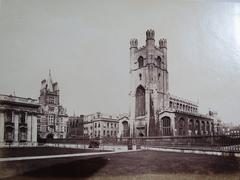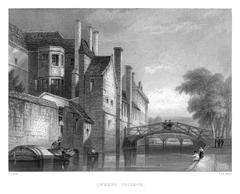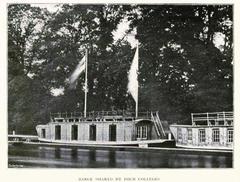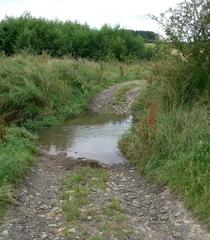Guide to Visiting Wimpole Home Farm, Cambridge, United Kingdom
Date: 23/07/2024
Introduction
Nestled in the picturesque countryside of Cambridgeshire, England, Wimpole Home Farm is a captivating blend of historical charm and contemporary agricultural practices. As part of the expansive Wimpole Estate, the farm offers visitors a unique opportunity to explore centuries of agricultural innovation, architectural significance, and cultural heritage. Established in the 18th century, Wimpole Home Farm has evolved into a prominent educational and recreational site, managed by the National Trust. Whether you’re a history enthusiast, a family looking for an engaging day out, or a visitor interested in sustainable farming practices, Wimpole Home Farm has something to offer everyone.
Table of Contents
History of Wimpole Home Farm
Origins and Early Development
Wimpole Home Farm, located in the picturesque countryside of Cambridgeshire, England, has a rich history dating back to the 18th century. The farm was established as part of the Wimpole Estate, which itself has roots stretching back to the 14th century. The estate was acquired by Sir John Cutts in the early 1600s, but it was under the ownership of Philip Yorke, the 1st Earl of Hardwicke, in the mid-1700s that the farm began to take shape (National Trust).
Agricultural Innovations
During the 18th and 19th centuries, Wimpole Home Farm became a site of agricultural innovation. The farm was designed to be a model of progressive farming techniques, reflecting the broader agricultural revolution occurring in Britain at the time. The estate’s owners invested in new farming equipment and practices, such as crop rotation and selective breeding, which significantly increased productivity (Historic England).
The Role of Capability Brown
One of the most influential figures in the development of Wimpole Home Farm was Lancelot “Capability” Brown, the renowned landscape architect. In the 1760s, Brown was commissioned to redesign the Wimpole Estate, including the farm. His vision integrated the farm into the broader landscape, creating a harmonious blend of agriculture and natural beauty. Brown’s work at Wimpole is considered one of his masterpieces, showcasing his ability to enhance both the aesthetic and functional aspects of the land (Capability Brown).
Victorian Era and Technological Advancements
The Victorian era brought further advancements to Wimpole Home Farm. The Industrial Revolution introduced new machinery and techniques that transformed agricultural practices. The farm adopted steam-powered engines and mechanized equipment, which increased efficiency and output. Additionally, the construction of new farm buildings, such as barns and stables, reflected the architectural styles of the period and provided improved facilities for livestock and storage (Cambridge Past, Present & Future).
20th Century Changes and Preservation Efforts
The 20th century saw significant changes at Wimpole Home Farm. The estate faced challenges during the World Wars, with labor shortages and economic difficulties impacting agricultural production. However, the farm continued to operate and adapt to changing circumstances. In the latter half of the century, efforts to preserve and restore the historical aspects of the farm gained momentum. The National Trust acquired the Wimpole Estate in 1976, ensuring the protection and maintenance of its historical and agricultural heritage (National Trust).
Visitor Information
Visiting Hours and Tickets
Wimpole Home Farm is open to visitors throughout the year, with varying hours depending on the season. Typically, the farm is open from 10:00 AM to 5:00 PM. It is recommended to check the National Trust website for the most up-to-date visiting hours.
Tickets can be purchased online or at the entrance. Prices vary, with discounts available for National Trust members, families, and groups. For the latest ticket prices, visit the National Trust ticketing page.
Educational and Recreational Role
Today, Wimpole Home Farm serves not only as a working farm but also as an educational and recreational site. The farm offers visitors a glimpse into traditional farming practices and the history of agriculture in England. Educational programs and interactive exhibits provide insights into the farm’s operations, including animal husbandry, crop cultivation, and sustainable farming techniques. Visitors can explore the farm’s historic buildings, interact with farm animals, and participate in seasonal activities such as lambing and harvesting (Visit Cambridge).
Architectural Significance
The architectural significance of Wimpole Home Farm is evident in its well-preserved buildings and structures. The farm complex includes a variety of buildings, each with its own historical and functional importance. Notable structures include the Great Barn, built in the 18th century, which showcases traditional timber framing techniques, and the Victorian-era stable block, which reflects the architectural style of the period. These buildings not only serve practical purposes but also contribute to the farm’s historical and aesthetic value (Historic England).
Contributions to Agricultural Heritage
Wimpole Home Farm’s contributions to agricultural heritage extend beyond its physical structures. The farm has played a significant role in preserving and promoting traditional farming practices and breeds. Rare and heritage livestock breeds, such as the Red Poll cattle and Suffolk Punch horses, are raised on the farm, ensuring the survival of these important genetic resources. The farm’s commitment to sustainable and organic farming practices also highlights its role in promoting environmentally responsible agriculture (Rare Breeds Survival Trust).
Community Engagement and Events
Wimpole Home Farm actively engages with the local community and hosts a variety of events throughout the year. Seasonal festivals, such as the Harvest Festival and Christmas Fair, attract visitors of all ages and provide opportunities to experience rural traditions and crafts. Workshops and demonstrations, ranging from sheep shearing to cheese making, offer hands-on learning experiences. These events not only celebrate the farm’s agricultural heritage but also foster a sense of community and connection to the land (National Trust Events).
Nearby Attractions and Accessibility
Visitors to Wimpole Home Farm can also explore the surrounding Wimpole Estate, which includes a grand mansion, beautiful gardens, and scenic parklands. The estate is easily accessible by car, with ample parking available. Public transport options include bus services from Cambridge and Royston. For detailed travel tips and accessibility information, visit the National Trust travel guide.
Future Prospects and Conservation
Looking to the future, Wimpole Home Farm continues to prioritize conservation and sustainability. Ongoing efforts to restore and maintain the farm’s historic buildings ensure that future generations can appreciate its architectural and cultural significance. Additionally, the farm’s commitment to sustainable farming practices and biodiversity conservation aligns with broader environmental goals. By balancing historical preservation with modern agricultural practices, Wimpole Home Farm remains a vital and dynamic part of the Wimpole Estate (National Trust Conservation).
FAQ
Q: What are the visiting hours for Wimpole Home Farm?
A: Wimpole Home Farm is typically open from 10:00 AM to 5:00 PM, but it’s best to check the National Trust website for the most current hours.
Q: How much are tickets to Wimpole Home Farm?
A: Ticket prices vary, with discounts for National Trust members, families, and groups. For the latest prices, visit the National Trust ticketing page.
Q: Are there any special events at Wimpole Home Farm?
A: Yes, the farm hosts a variety of seasonal events and workshops throughout the year. Check the National Trust events page for more details.
Q: Is Wimpole Home Farm accessible by public transport?
A: Yes, bus services from Cambridge and Royston can take you to the Wimpole Estate. Visit the National Trust travel guide for more information.
Conclusion and Call to Action
Wimpole Home Farm stands as a testament to the enduring significance of agricultural innovation, architectural heritage, and community engagement. From its origins in the 18th century to its current role as a modern educational and recreational site, the farm reflects the broader changes in agriculture and society over the centuries. Managed by the National Trust, Wimpole Home Farm continues to prioritize conservation and sustainability, ensuring that future generations can appreciate its rich history and contributions to agricultural heritage (National Trust Conservation). Visitors can explore the farm’s historic buildings, interact with rare livestock breeds, and participate in seasonal events, all while supporting environmentally responsible agricultural practices. Plan your visit today to experience this remarkable agricultural estate and immerse yourself in the life of a working farm (Visit Cambridge).
References
- National Trust. (n.d.). Wimpole Estate. https://www.nationaltrust.org.uk/wimpole-estate
- Historic England. (n.d.). The List Entry 1000627. https://historicengland.org.uk/listing/the-list/list-entry/1000627
- Capability Brown. (n.d.). Wimpole. https://www.capabilitybrown.org/garden/wimpole
- Cambridge Past, Present & Future. (n.d.). Wimpole Estate. https://www.cambridgeppf.org/wimpole-estate
- Visit Cambridge. (n.d.). Wimpole Estate. https://www.visitcambridge.org/wimpole-estate
- Rare Breeds Survival Trust. (n.d.). Wimpole Home Farm. https://www.rbst.org.uk/wimpole-home-farm
- National Trust Events. (n.d.). What’s On. https://www.nationaltrust.org.uk/wimpole-estate/whats-on
- National Trust Travel Guide. (n.d.). How to Get Here. https://www.nationaltrust.org.uk/wimpole-estate/how-to-get-here
- National Trust Conservation. (n.d.). Conservation at Wimpole. https://www.nationaltrust.org.uk/wimpole-estate/features/conservation-at-wimpole











